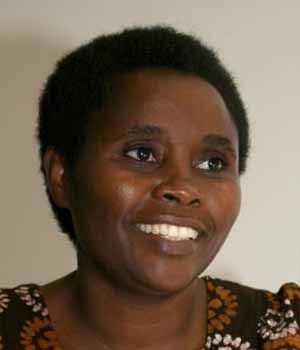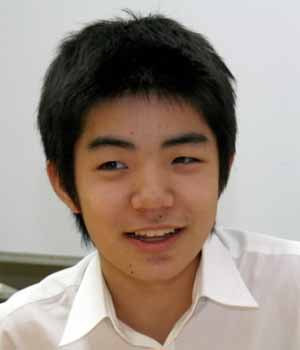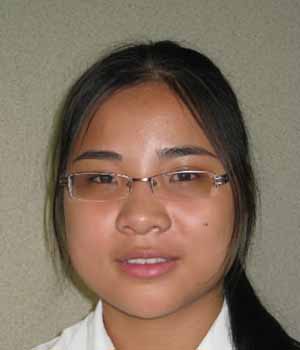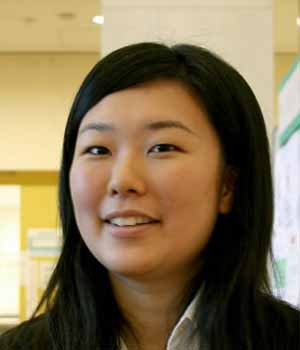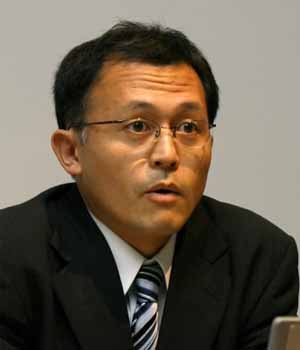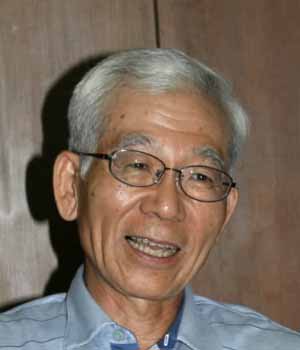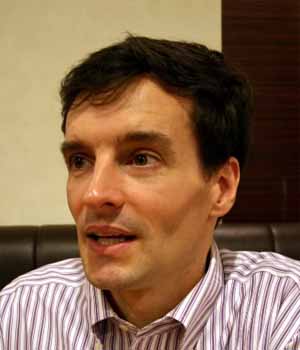Children’s Summit: Expectations and Advice
Oct. 10, 2008
by Toshiko Bajo, Staff Writer
The City of Hiroshima will proceed with plans to hold a Children’s Summit at which young people from around the world will gather in Hiroshima to talk about peace. The concept was proposed at the G8 Summit of Lower House Speakers held in Hiroshima on September 2.
The idea of a Children’s Summit was originally conceived by children themselves. In March, writers for Peace Seeds, a children’s newspaper produced by teens in Hiroshima that appears as a regular feature in the Chugoku Shimbun, interviewed Yohei Kono, Speaker of the House of Representatives, in Tokyo about the G8 Speakers’ Summit. At that time they told him about their proposal to hold a Children’s Summit.
The Peace Seeds writers later raised the idea with the other speakers who participated in the meeting and all of them were supportive. Peter Milliken, Speaker of Canada’s House of Commons, said, “…it is important for you to meet with children from other countries in order to exchange your views about how peace can be achieved.”
Boris Gryzlov, Speaker of Russia’s State Duma, said, “The outcome of a Children’s Summit could be significant, not only for its participants, but also for those who lead nations, are engaged in national policy-making, and have an influence on international politics.”
At a luncheon during the G8 Speakers’ Summit, Speaker Kono said, “Why don’t we consider the Children’s Summit an egg yielded by the G8 Summit of Lower House Speakers? When this egg hatches and the chick emerges, I would like Mayor Akiba to think about what to feed our little chick.” At a press conference following the G8 Speakers’ Summit, Speaker Kono described the proposal for a Children’s Summit as one of its achievements.
The Chugoku Shimbun asked students who have participated in international conferences as well as other knowledgeable individuals what sort of topics should be addressed at a Children’s Summit in Hiroshima.
Participants should report on summit to their countries
Kambenga Marie Louise, 43, Fukushima
Vice president of NPO Think About Education in Rwanda
I would like the participants to discuss what their lives would be like without peace and how peace can be maintained. Before the civil war in Rwanda, it never occurred to me that something that would completely change my life could happen. By imagining what that would be like, people can recognize the importance of being able to spend their days happily and in peace.
A tremendous amount of money has been spent on the summits for adults thus far, but they’ve just ended up being big parties. I don’t want the Children’s Summit to be like that.
So it’s important to create an opportunity for the participants to go back to their countries and report to their governments and local residents on what they talked about in Hiroshima. Then the representatives would come back to Hiroshima for the next summit with reports on what changes were made in their governments as a result of the advice offered by the previous Children’s Summit and discuss them. That’s the sort of thing I’d like to see happen.
Multilingual interpreting needed
Shiro Kuriwaki, 17, Tokyo
High school student, Japanese representative to Junior 8 Summit
The summit should be attended by about 40 high school students. That’s just the right age and the right size to hold serious debates. If there are too many participants some people won’t speak up at all. It’s better for each person to have an opportunity to talk to every other participant at least once.
The participants should take the opportunity to learn what children from various parts of the world think. In order to do that, interpreting must be provided in various languages. If participants can speak in their own language rather than a foreign language, the discussions will be much more meaningful.
It’s better if no adults participate in the meetings, but if there are only children the discussions may not make much progress. So it might be a good idea to have college students, who are not quite adults and not quite children, help out.
It’s important to be sure not to try to cram too much sightseeing and other events into a short period of time. The time should be spent on discussion itself.
Participants must learn horror of A-bomb
Pham Thi Quynh Trang, 17, Hiroshima
Foreign student from Vietnam
I came to Hiroshima Jogakuin High School from Hanoi as a foreign student in April. Before that I knew that an atomic bomb had been dropped on Hiroshima, but that was it. I’ll never forget the horror I felt when I visited the Honkawa Peace Museum at Honkawa Elementary School. It’s important for people to visit the A-Bomb Dome and the Peace Memorial Museum when they are young and impressionable and see for themselves the destructive power and horror of nuclear weapons.
The world is not at peace. There are A-bomb survivors in Japan, and in Vietnam there are people who suffer from the effects of defoliants. My aunt is 36 years old, but because of defoliants she has the mental capacity of a 4-year-old. In various places around the world people are becoming victims because they are not at peace. The summit participants should report on their situations so they can understand each other’s suffering.
It would be great if the Children’s Summit was held on a regular basis and was successful and then a university where peace could be studied opened in Hiroshima.
Use blog to get the word out
Saki Fujiwara, 18, Kawasaki
Reporter for Children’s Express
I’d like the summit to provide an opportunity for children from around the world to consider various issues. How about having a blog on which you can give regular updates not only on the events during the summit but also the preparation for it and the briefing afterwards? With a blog a lot of people can write about their feelings openly. Participants can learn about the feelings of others of the same generation, and the blog will also raise the awareness of readers who aren’t participants.
It’s important to produce something as well as to have discussions. When I participated in the International Youth Media Summit held in Serbia this year, we summarized our recommendations on each issue in one-minute videos. There were differences of opinion on the script and the editing, but we were able to reach an understanding. If they have the goal of producing something, children can create something unique on their own. A joint declaration is one possibility.
It would be neat if the summit became a tool that could be used to broaden the scope of activities among friends and at school.
Participants must have an awareness of themselves as global citizens
Akira Kawasaki, 39, Kawasaki
Executive committee member of Peace Boat
I’d like the summit participants to gain an awareness of themselves as global citizens, introducing themselves not as representatives of their countries but by saying what part of the world they come from. Representatives from places like Taiwan and Palestine that are not recognized as nations should also be invited. Although they are not countries, they are important regions.
An equal number of participants should also be invited from developing countries, and I’d like them to discuss poverty, the environment, and other issues facing the international community as well as the relationship of these issues to global military spending. The concept of a Children’s Summit is a good one, so I don’t want to see it end up as just an international exchange. I’d like to see substantive results.
How about creating a support organization in which non-governmental organizations work together across national borders? This organization could bring together children from nations around the world and they could help run it. If the timing is right, we can use the Peace Boat, which sails around the world, to bring the children to Hiroshima.
Keep values of adults out
Masamoto Nasu, 66, Hofu
Author of children’s books
What’s important is that the children can discuss things freely. All the adults need to do is set “peace” as the framework for discussion.
Adults will probably have to provide financial backing, interpreting, and other support, but basically the children themselves should decide what they would like to talk about and what kind of events they would like to hold. The values of adults, such as the notion that discussion of religion should be avoided as it may result in conflict, should not enter into it. I’d like the children to be able to speak freely and engage in constructive discussion.
I think it would be appropriate for the participants to be elementary and junior high school students. High school students are likely to base their comments on the interests of their own countries or say what they think adults want to hear. It’s also important that the children don’t feel burdened by the responsibility of representing their countries or in other ways.
Make food, water topics for discussion
Arthur Binard, 41, Tokyo
Poet
In the future, wars may be fought over food and water, so how about making these topics for discussion? Then participants can think about peace starting with the things that are most familiar and most important to them.
There’s no need to avoid discussing the atomic bombing, and if the gathering is held in Hiroshima naturally the participants can learn about it. So instead of doing that, they could, for example, look into the ingredients used in Hiroshima “okonomiyaki” [a kind of crepe made with meat and cabbage]. If you consider where the flour is imported from and what the chickens that lay the eggs are fed you can see how the world’s food supply is interconnected. Children will realize that their lives are not independent of other countries but that there is a global community.
At the end they could announce their “recipe for peace” in which they describe what is needed to solve problems. They also need to make specific requests of governments. These should be presented at the next summit for adults.
(Oct. 6, 2008)
Related articles
Children’s Summit, proposed by junior writers of the Chugoku Shimbun, receives G8 support (Sept, 3, 2008)
Junior writers meet with Yohei Kono, Speaker of the House of Representatives (March 28, 2008)
The City of Hiroshima will proceed with plans to hold a Children’s Summit at which young people from around the world will gather in Hiroshima to talk about peace. The concept was proposed at the G8 Summit of Lower House Speakers held in Hiroshima on September 2.
The idea of a Children’s Summit was originally conceived by children themselves. In March, writers for Peace Seeds, a children’s newspaper produced by teens in Hiroshima that appears as a regular feature in the Chugoku Shimbun, interviewed Yohei Kono, Speaker of the House of Representatives, in Tokyo about the G8 Speakers’ Summit. At that time they told him about their proposal to hold a Children’s Summit.
The Peace Seeds writers later raised the idea with the other speakers who participated in the meeting and all of them were supportive. Peter Milliken, Speaker of Canada’s House of Commons, said, “…it is important for you to meet with children from other countries in order to exchange your views about how peace can be achieved.”
Boris Gryzlov, Speaker of Russia’s State Duma, said, “The outcome of a Children’s Summit could be significant, not only for its participants, but also for those who lead nations, are engaged in national policy-making, and have an influence on international politics.”
At a luncheon during the G8 Speakers’ Summit, Speaker Kono said, “Why don’t we consider the Children’s Summit an egg yielded by the G8 Summit of Lower House Speakers? When this egg hatches and the chick emerges, I would like Mayor Akiba to think about what to feed our little chick.” At a press conference following the G8 Speakers’ Summit, Speaker Kono described the proposal for a Children’s Summit as one of its achievements.
The Chugoku Shimbun asked students who have participated in international conferences as well as other knowledgeable individuals what sort of topics should be addressed at a Children’s Summit in Hiroshima.
Participants should report on summit to their countries
Kambenga Marie Louise, 43, Fukushima
Vice president of NPO Think About Education in Rwanda
I would like the participants to discuss what their lives would be like without peace and how peace can be maintained. Before the civil war in Rwanda, it never occurred to me that something that would completely change my life could happen. By imagining what that would be like, people can recognize the importance of being able to spend their days happily and in peace.
A tremendous amount of money has been spent on the summits for adults thus far, but they’ve just ended up being big parties. I don’t want the Children’s Summit to be like that.
So it’s important to create an opportunity for the participants to go back to their countries and report to their governments and local residents on what they talked about in Hiroshima. Then the representatives would come back to Hiroshima for the next summit with reports on what changes were made in their governments as a result of the advice offered by the previous Children’s Summit and discuss them. That’s the sort of thing I’d like to see happen.
Multilingual interpreting needed
Shiro Kuriwaki, 17, Tokyo
High school student, Japanese representative to Junior 8 Summit
The summit should be attended by about 40 high school students. That’s just the right age and the right size to hold serious debates. If there are too many participants some people won’t speak up at all. It’s better for each person to have an opportunity to talk to every other participant at least once.
The participants should take the opportunity to learn what children from various parts of the world think. In order to do that, interpreting must be provided in various languages. If participants can speak in their own language rather than a foreign language, the discussions will be much more meaningful.
It’s better if no adults participate in the meetings, but if there are only children the discussions may not make much progress. So it might be a good idea to have college students, who are not quite adults and not quite children, help out.
It’s important to be sure not to try to cram too much sightseeing and other events into a short period of time. The time should be spent on discussion itself.
Participants must learn horror of A-bomb
Pham Thi Quynh Trang, 17, Hiroshima
Foreign student from Vietnam
I came to Hiroshima Jogakuin High School from Hanoi as a foreign student in April. Before that I knew that an atomic bomb had been dropped on Hiroshima, but that was it. I’ll never forget the horror I felt when I visited the Honkawa Peace Museum at Honkawa Elementary School. It’s important for people to visit the A-Bomb Dome and the Peace Memorial Museum when they are young and impressionable and see for themselves the destructive power and horror of nuclear weapons.
The world is not at peace. There are A-bomb survivors in Japan, and in Vietnam there are people who suffer from the effects of defoliants. My aunt is 36 years old, but because of defoliants she has the mental capacity of a 4-year-old. In various places around the world people are becoming victims because they are not at peace. The summit participants should report on their situations so they can understand each other’s suffering.
It would be great if the Children’s Summit was held on a regular basis and was successful and then a university where peace could be studied opened in Hiroshima.
Use blog to get the word out
Saki Fujiwara, 18, Kawasaki
Reporter for Children’s Express
I’d like the summit to provide an opportunity for children from around the world to consider various issues. How about having a blog on which you can give regular updates not only on the events during the summit but also the preparation for it and the briefing afterwards? With a blog a lot of people can write about their feelings openly. Participants can learn about the feelings of others of the same generation, and the blog will also raise the awareness of readers who aren’t participants.
It’s important to produce something as well as to have discussions. When I participated in the International Youth Media Summit held in Serbia this year, we summarized our recommendations on each issue in one-minute videos. There were differences of opinion on the script and the editing, but we were able to reach an understanding. If they have the goal of producing something, children can create something unique on their own. A joint declaration is one possibility.
It would be neat if the summit became a tool that could be used to broaden the scope of activities among friends and at school.
Participants must have an awareness of themselves as global citizens
Akira Kawasaki, 39, Kawasaki
Executive committee member of Peace Boat
I’d like the summit participants to gain an awareness of themselves as global citizens, introducing themselves not as representatives of their countries but by saying what part of the world they come from. Representatives from places like Taiwan and Palestine that are not recognized as nations should also be invited. Although they are not countries, they are important regions.
An equal number of participants should also be invited from developing countries, and I’d like them to discuss poverty, the environment, and other issues facing the international community as well as the relationship of these issues to global military spending. The concept of a Children’s Summit is a good one, so I don’t want to see it end up as just an international exchange. I’d like to see substantive results.
How about creating a support organization in which non-governmental organizations work together across national borders? This organization could bring together children from nations around the world and they could help run it. If the timing is right, we can use the Peace Boat, which sails around the world, to bring the children to Hiroshima.
Keep values of adults out
Masamoto Nasu, 66, Hofu
Author of children’s books
What’s important is that the children can discuss things freely. All the adults need to do is set “peace” as the framework for discussion.
Adults will probably have to provide financial backing, interpreting, and other support, but basically the children themselves should decide what they would like to talk about and what kind of events they would like to hold. The values of adults, such as the notion that discussion of religion should be avoided as it may result in conflict, should not enter into it. I’d like the children to be able to speak freely and engage in constructive discussion.
I think it would be appropriate for the participants to be elementary and junior high school students. High school students are likely to base their comments on the interests of their own countries or say what they think adults want to hear. It’s also important that the children don’t feel burdened by the responsibility of representing their countries or in other ways.
Make food, water topics for discussion
Arthur Binard, 41, Tokyo
Poet
In the future, wars may be fought over food and water, so how about making these topics for discussion? Then participants can think about peace starting with the things that are most familiar and most important to them.
There’s no need to avoid discussing the atomic bombing, and if the gathering is held in Hiroshima naturally the participants can learn about it. So instead of doing that, they could, for example, look into the ingredients used in Hiroshima “okonomiyaki” [a kind of crepe made with meat and cabbage]. If you consider where the flour is imported from and what the chickens that lay the eggs are fed you can see how the world’s food supply is interconnected. Children will realize that their lives are not independent of other countries but that there is a global community.
At the end they could announce their “recipe for peace” in which they describe what is needed to solve problems. They also need to make specific requests of governments. These should be presented at the next summit for adults.
(Oct. 6, 2008)
Related articles
Children’s Summit, proposed by junior writers of the Chugoku Shimbun, receives G8 support (Sept, 3, 2008)
Junior writers meet with Yohei Kono, Speaker of the House of Representatives (March 28, 2008)

